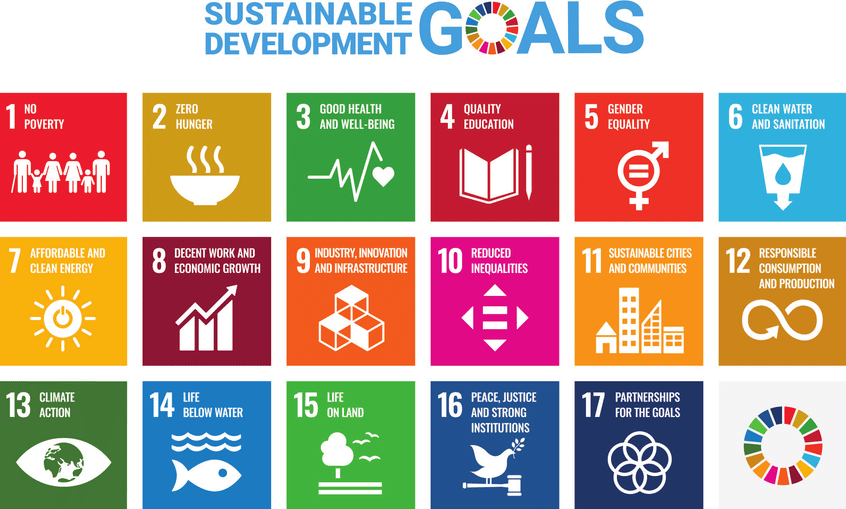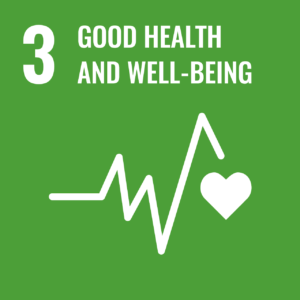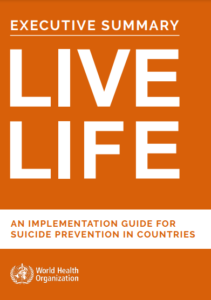What is United Nations Sustainable Development Goals, SDGs?
In September 2015, the United Nations (UN) published The 2030 Agenda for Sustainable Development (The 2030 Agenda). The 2030 Agenda demonstrates a global framework for tackling poverty, ensuring peace and prosperity for all people and shifting the global economy onto a sustainable path. The Agenda comprises 17 Sustainable Development Goals (SDGs) with 169 targets, supported by 193 nations, which aims to achieve sustainability in various sectors encompassing climate change, economic inequality, innovation, sustainable consumption, peace and justice and so forth. The SDGs form an inclusive agenda, in which they tackle the root causes of poverty and unite us together to make a positive change for both people and planet . [1]

Sustainable Development Goal 3: Good Health and Well-being
Ensure Healthy Lives and Promote Well-being for All at All Ages
SDG 3.4 aims to reduce by one third premature mortality by 2030 from non-communicable diseases through prevention and treatment and promote mental health and well-being. Suicidal behavior is a serious but potentially preventable cause of premature death. Growing awareness of the importance of mental health to global health has led to new initiatives, supported by the World Health Organization (WHO) and the United Nations (UN). In target 3.4, suicide rate is an indicator in Sustainable Development Goal (SDG) 3 (3.4.2)。[2]

Why Does Suicide Prevention Matter?
The World Health Organization (WHO) estimated that more than 700,000 people die in the world by suicide in 2019, to reduce by one-third premature mortality by 2030 from non-communicable diseases through prevention and treatment and promoting mental health and well-being, is the sustainable development goal (SDG) 3 in the 2030 Agenda for Sustainable Development, [3] which was adopted by all the Member States of the United Nations in 2015. Within agenda goal 3, the target 3.4 suicide rate is an indicator 3.4.2.
Overview of Suicide Data in the World
The latest estimates published by the WHO in Suicide Worldwide in 2019: [4]
- More than 700,000 people die by suicide every year, or 1 in 100 deaths. More people die each year from suicide than from HIV, malaria or breast cancer or even from war and homicide.
- More than twice as many men died from suicide as women (12.6 per 100,000 men, compared to 5.4 per 100,000 women). In high-income countries, male suicide rates are generally higher (16.5 per 100,000 people). For women, low- and middle-income countries have the highest suicide rate (7.1 per 100,000 people).
- The number of suicide attempts is many times the number of suicide deaths. (WHO has reported in a report that for every adult suicide death, there may be more than 20 suicide attempts.) In the general population, suicide attempts are the greatest risk factor for suicide.
- Suicide is the fourth leading cause of death for children aged 15-19.
- The most common methods of suicide globally are drinking pesticides, hanging and using firearms.
While these figures are grim, the good news is that the global suicide death rate fell by 36% over the two-decade period between 2000 and 2019. Should the decline continue at its current rate, global SDG and WHO targets to reduce suicide mortality by one third by 2030 will not be met.
The Development of World Suicide Prevention
“We cannot – and must not – ignore suicide,” said Dr. Tedros Adhanom Ghebreyesus on 17 June 2021, the General Director of the WHO. “Each one is a tragedy. Our attention to suicide prevention is even more important now, after many months living with the COVID-19 pandemic, with many of the risk factors for suicide ̶ job loss, financial stress and social isolation – still very much present. The new guidance that WHO is releasing today provides a clear path for stepping up suicide prevention efforts.”
The world is not moving as planned towards the 2030 suicide reduction target. WHO advocates that countries take action to prevent suicide, preferably through comprehensive national suicide prevention strategies. Governments and communities at all levels can contribute to suicide prevention through the implementation of the Live Life (the WHO approach to suicide prevention), which countries can build upon to develop comprehensive national suicide prevention strategies. The guidelines are available to all countries, regardless of whether they currently have a national suicide prevention strategy.
Live Life – An Implementation Guide
Suicide rates fell in the 20 years between 2000 and 2019, with the global rate decreasing by 36%, with decreases ranging from 17% in the Eastern Mediterranean Region to 47% in the European Region and 49% in the Western Pacific. But in the Americas Region, rates increased by 17% in the same time period.
Although some countries have placed suicide prevention high on their agendas, too many countries remain uncommitted. Currently only 38 countries are known to have a national suicide prevention strategy. A significant acceleration in the reduction of suicides is needed to meet the SDG target of a one-third reduction in the global suicide rate by 2030.
To support countries in their efforts, WHO released a comprehensive guidance for implementing its LIVE LIFE [5] approach to suicide prevention. The four strategies of this approach are:
- limiting access to the means of suicide, such as highly hazardous pesticides and firearms;
- educating the media on responsible reporting of suicide;
- fostering socio-emotional life skills in adolescents; and
- early identification, assessment, management and follow-up of anyone affected by suicidal thoughts and behaviour.
The first two of these four strategies are more about calling on countries to reduce the probability of suicide in terms of laws and regulations, media publicity, etc. “Stop the production, sale and use of paraquat” and “Invite celebrities to become anti-depression ambassadors” are all relevant actions taken by countries in suicide prevention.

[1] https://www.undp.org/sustainable-development-goals
[2] https://unstats.un.org/sdgs/indicators/Global%20Indicator%20Framework%20after%202020%20review_Chi.pdf
[3] https://sdgs.un.org/zh/2030agenda
[4] https://www.who.int/publications/i/item/9789240026643
[5] https://apps.who.int/iris/bitstream/handle/10665/341816/9789240029606-chi.pdf

